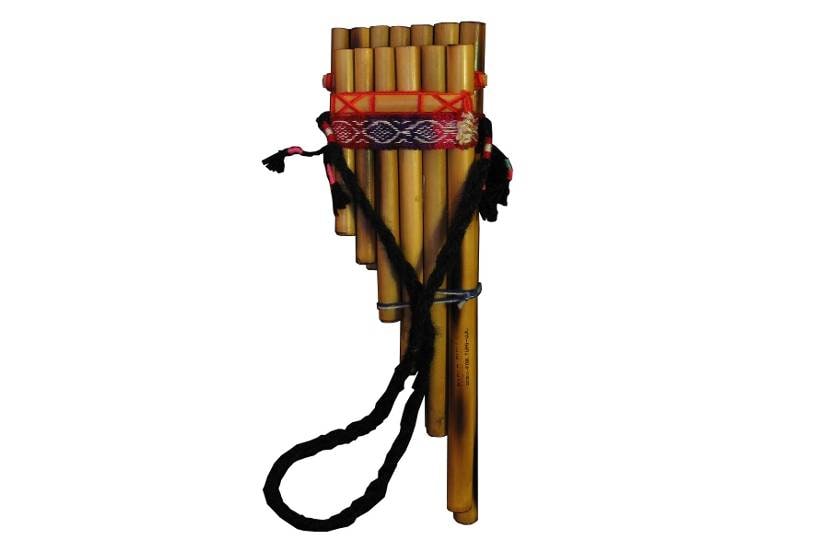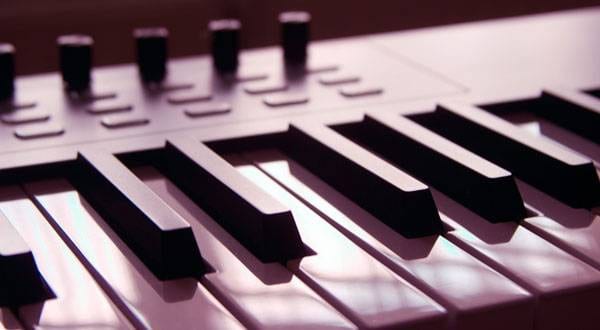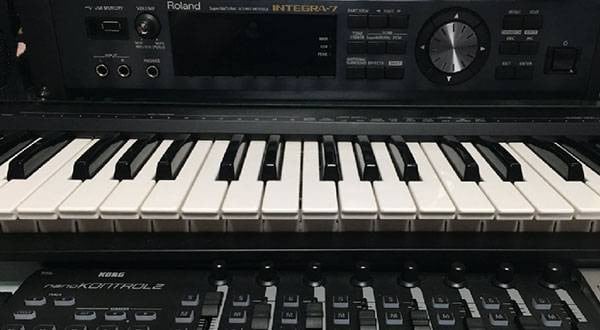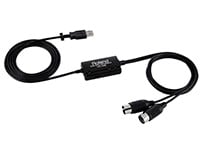■ Previous GM Sound Source Series
GM Sound Source 01: Ancient GM Sound Sources
GM Sound Source 02: Piano Category
GM Sound Source 03: Chromatic Percussion Category
GM Sound Source 04: Organ Category
GM Sound Source 05: Guitar Category
GM Sound Source 06: Bass Category
GM Sound Source 07: Orchestra Category
GM Sound Source 08: Ensemble Category
GM Sound Source 09: Brass Category
GM Sound Source 10: Reed Category
The pipe category covers air reed instruments in the woodwind family. Like the Reed category, it is one of the rare categories that was not expanded in GM2. Wind instruments in general are often used for prominent melody parts. However, when played with a fixed velocity, they tend to sound mechanical. Therefore, fine-tuned editing is required, adjusting volume dynamics, vibrato, and pitch fluctuations for each instrument to achieve a more natural expression.
Air reed instruments do not have vibrating parts like reed instruments, nor do they require lip vibration like lip reeds. Instead, they produce sound by directing airflow onto an edge called the embouchure hole, causing resonance within the tube due to differences in air pressure. While this principle was not understood until modern times, air reed instruments have existed for thousands of years. This shows that practical instruments can be created even without full knowledge of their scientific principles.
In the video below, you can listen to the tones from the TTS-1 synthesizer.
073 000 Piccolo - Range: D5-C8
The piccolo produces the highest pitch among wind instruments. It operates on the same principle as the flute but sounds about an octave higher. The piccolo is about half the length of a flute, and flute players often switch between the two. Its sharp, piercing high notes can stand out even in a brass band with high sound pressure.

074 000 Flute - Range: C4-C7
The flute is the representative instrument of the air reed family. In modern orchestras, only the flute and its variant, the piccolo, are regularly used among air reed instruments. Today’s highly expressive flute is based on the design by Theobald Boehm. The Boehm system flute was introduced to the public at the 1851 Great Exhibition in London. It marked a revolution, replacing the traditional wooden flute with a metal body and introducing mechanical keys covering all tone holes. These innovations significantly improved playability, provided greater volume, stabilized pitch, and enhanced the instrument’s overall balance. As a result, the Boehm flute became the global standard. Even after more than 150 years, its design has seen little change—testament to how well-conceived it was. Originally made of wood, the flute was classified as a woodwind instrument. However, even after the switch to metal construction, it retained its woodwind classification. Was there never a movement to change its categorization? Personally, I would prefer to call it an air reed instrument.

075 000 Recorder - Range: C4-C7
The recorder has been around since the Baroque period. Many people played soprano or alto recorders in elementary and middle school music classes. Like all instruments, the recorder evolved over time. While it was once used in court music, increasing demands for volume and expressiveness led to its replacement by newer instruments. It actually disappeared from mainstream music for a time. Its revival came when it was adopted for modern music education. Since its windway is fixed, its expressiveness is limited compared to the flute, but it produces stable pitch and is relatively easy to play. Its simple structure and the ability to mass-produce it cheaply using plastic molding technology made it ideal for educational use.

076 000 Pan Flute - Range: C4-C7
Also known as a panpipe, the pan flute has a primitive structure, consisting of a closed pipe for each pitch. Since players must move their heads to produce melodies—similar to playing a harmonica—its playability is somewhat challenging.
Its sound is simple and evokes a strong ethnic atmosphere. Variants of this instrument exist worldwide, but many Japanese people associate it with the Andean region of South America.

Photograph © Andrew Dunn, CC BY-SA 1.0 (Sourced from Wikipedia)
077 000 Bottle Blow - Range: C4-C7
This instrument reproduces the ‘booo’ sound produced when blowing across the opening of a bottle. The pitch is determined based on the Helmholtz resonance principle. Though rarely considered a musical instrument, it is widely used in scientific experiments. When sampled, playability is no longer an issue, making it practical as a sound source. Its timbre is similar to the pan flute, but it includes a distinct ‘whoosh’ noise at the attack when air is blown into the bottle.

Aurélien Mole, CC BY-SA 3.0 (Sourced from Wikipedia)
078 000 Shakuhachi - Range: G3-C6
The shakuhachi is a traditional Japanese flute. Structurally, it closely resembles the Western flute and shares its expressive capabilities. However, it has only five finger holes, requiring musicians to switch instruments for different keys. Greater expressiveness means a wider variety of tonal qualities. However, early TTS-style sampled sound sources struggled to capture this complexity, resulting in a limited and flat sound.

Lombroso, CC0 (Sourced from Wikipedia)
079 000 Whistle - Range: C4-C7
This refers to the human whistle. Years ago, Isao Tomita famously recreated a whistle-like sound using a Moog analog synthesizer, achieving impressive realism. In contrast, the TTS whistle sounds more like a simple sine wave with light vibrato, lacking the natural characteristics of a real whistle. It likely isn't a sample of an actual whistle sound. To make it sound more realistic, various techniques must be applied. In the sample video, the attack processing is poor, and there’s no noise, making it sound highly artificial. By layering noise from another sound source and using automation extensively, a more natural whistle effect could be achieved.

Frank Duveneck, Public domain (Sourced from Wikipedia)
080 000 Ocarina - Range: C4-C6
Although the ocarina is an air reed instrument, it differs from other wind instruments in that it is not cylindrical. Instead of determining pitch based on tube length, it does so through the instrument’s internal volume, which follows the Helmholtz resonance principle. I once attempted to design an ocarina using theoretical calculations. While I could approximate the diatonic scale, the semitones deviated significantly from equal temperament. This led me to consider adding more holes or incorporating a key system similar to the flute. Even with an ocarina tuned to precise pitches, slight variations in breath pressure can easily shift the pitch. This means that much of the tuning relies on the performer’s skill. The ocarina also has a limited range. To achieve the range of other wind instruments, one would need to combine multiple ocarinas or develop a way to vary the internal volume. These constraints make it a rather demanding instrument. To play chromatic passages on the ocarina, a musician must possess exceptional pitch awareness and technique. Despite its simple appearance and soft tone, it is far from an easy instrument to master.
The TTS ocarina sound resembles a sine wave, with only a few overtones, making it sound somewhat bland. To enhance its realism, elements such as pitch instability and dynamic volume adjustments must be introduced. The sample in the video is modeled after Sojiro’s rendition of El Cóndor Pasa.

The “sound & person” column is made up of contributions from you.
For details about contributing, click here.
















![[2023] Recommended Items for Music Programming - DAW/Software Instruments/Plug-ins](/contents/uploads/thumbs/2/2020/11/20201102_2_11495_1.jpg)
 DTMセール情報まとめ
DTMセール情報まとめ
 USB接続MIDIインターフェイス
USB接続MIDIインターフェイス
 USB接続対応のMIDIキーボード
USB接続対応のMIDIキーボード
 DTMに必要な機材
DTMに必要な機材
 UR-RT4 ソフト音源やループ素材をリアンプ
UR-RT4 ソフト音源やループ素材をリアンプ
 DTM・DAW購入ガイド
DTM・DAW購入ガイド















